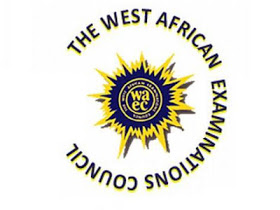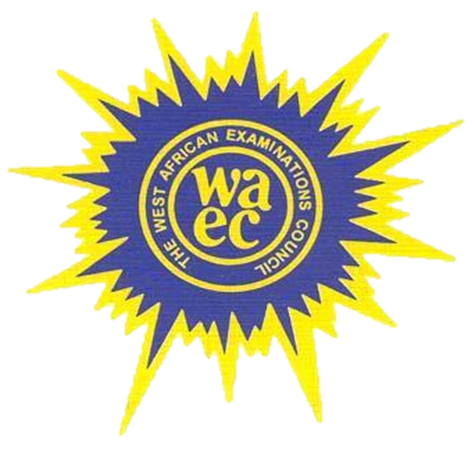NECO 2020 Economics Obj And Essay Answer – Oct/Nov Expo
WELCOME TO AYOSTUFFS BEST EXAM EVER
=====================================
KEEP REFRESH THIS PAGE IN EVERY 5MIN
===================================
ECONOMICS OBJ:
1-10: DCABDDCAAA
11-20: EEEABDBABD
21-30: BBCEAEABEE
31-40: EDDEDDAAAC
41-50: CCACACAEEA
51-60: DEDEEEBCED
ECONOMIC ESSAY
(1a)
Qd = 40 - 4p
In a tabular form:
P|10|8| 6|4 |2 |1
Q|0 |8|16|24|32|36
When price = 10
Qd = 40-4(10) = 0
When price = 8
Qd = 40-4(8) = 8
When price = 6
Qd = 40-4(6) = 16
When price = 4
Qd = 40-4(4) = 24
When price = 2
Qd = 40-4(2) = 32
When price = 1
Qd = 40-4(1) = 36
(1b)
Draw the diagram:
CLICK HERE FOR THE IMAGE
(1c)
The slope of demand curve is downwards which indicates that the
quantity demanded has negative correlation with price. The higher the
price the lower the quantity demanded and vice versa.
============================
(2a)
MR = ∆inTR/∆inQ
TR2 - TR1/Q2 - Q1
At Q = 2,
MR = 30-20/2-1 = ₦10
At Q = 3
MR = 60-30/3-2 = ₦30
At Q = 4
MR = 80-60/4-3 = ₦20
At Q = 5
MR = 120-80/5-4 = ₦40
At Q = 6
MR = 150-120/6-5 = ₦30
AR = TR/Q
At Q = 1
AR = 20/1 = ₦20
At Q = 2
AR = 30/2 = ₦15
At Q = 3
AR = 60/3 = ₦20
At Q = 4
AR = 80/4 = ₦20
At Q = 5
AR = 120/5 = ₦24
At Q = 6
AR = 150/6 = ₦25
MC = TC2 - TC1/Q2 - Q1
At Q = 1
MC = 40 - 0/1 - 0 = ₦40
At Q = 2
MC = 50 - 40/2 - 1 = ₦10
At Q = 3
MC = 60 - 50/3 - 2 = ₦10
At Q = 4
MC = 80 - 60/4 - 3 = ₦20
At Q = 5
MC = 110 - 80/5 - 4 = ₦30
At Q = 6
MC = 120 - 110/6 - 5 = ₦10
(2b)
The conditions necessary for profit maximization are:
(i) MC = MR
(ii) When MC is cutting MR from below at equilibrium point.
Draw the diagram:
From the above diagram, point "X" is the point of profit maximization.
============================
(4a)
Labour can be defined as all human efforts of any kind, either skilled
or unskilled, mental or manual, directed towards the production of
goods and services. The rewards for labour as a factor of production
comes in form of wages and salaries.
(4b)
(Choose Any four)
(i) Education and training: The level of education and training received
by a worker will go a long way towards increasing the efficiency of
labor. A well-educated or well-trained worker is in position to increase
efficiency in his work.
(ii) Level of commitment and attitude: The level of commitment and
attitude of a worker can affect the efficiency of labour. When a
worker is highly committed to his job, this will result in efficiency of
labour.
(iii) Efficient management: When efficient management is in place in
any organization, it will go a long way towards improving efficiency of
labour.
(iv) Efficiency of other factors of production: The efficiency of other
factors of production like land, capital, and entrepreneur when
combined with efficient labour will increase productivity.
(v) Weather condition: The physical or weather conditions in a workplace
can affect the efficiency of labour. Hot weather lowers efficiency of
labour while Cool weather or environment increases efficiency of labour.
============================
(5)
(Choose Any five)
(i)Tax: Taxes include both direct and indirect taxes. Government
generates income or revenue by taxing individuals and corporate bodies
(ii)Grant and aids: Government can receive grants and aids as revenue
from wealthy or developed countries.
(iii)Rent and rates: Earning from water, properties, housing, etc owned
by the government are sources of income to the government
(iv)Licence: Government can also generate revenue through licenses e.g
drivers license
(v)Savings: Government can also generate revenue through savings,
especially when the country has budget surplus
(vi)Earning from government investment: Government can also earn
income or generate revenue from government-owned business
enterprises or from joint ventures
============================
(7)
(i)Inadequate educational system and High cost of education: The
educational systems practiced in Nigeria is adequate as special
attention is paid to paper qualification to the detriment of job
creation. As a result of high cost of acquiring education, many find it
difficult to go to school and so end up with low paper qualifications
which may not permit them to get good employment.
(ii)Lack of industrial growth and social amenities: Nigeria do not have
industries that are capable of employing enough workers. Labour tends
to be unavailable when there are no social amenities in the area. This
leads to unemployment.
(iii)Overpopulation and Deficiency in demand: When a country’s population
is too high, it tends to produce many workers and such workers may
not have jobs to do, thereby leading to unemployment. An overall in
demand for goods can lead companies to retrench workers.
(iv)Poor development plans and use of automated machines: Government
does not normally put in place development plans that can create
employment opportunities or take care of the unemployed. The use of
automated machines in factories reduces the need for many workers
and this lead to unemployment.
(v) Geographical mobility of Labour: Geographical mobility of labour is one
of major causes of unemployment in Nigeria. Due to certain
circumstances, labour finds it difficult to move from one geographical
area to another and this results in unemployment.
============================
(8a)
Retailer may be defined as a trader who buys goods in small quantities
from the wholesaler and sells in bits or units to the final consumer. In
other words, a retailer is a merchant whose main business is to
purchase goods from the wholesalers in small quantities and sell in
smaller units directly to the final consumers.
(8b)
(i)Information: Middlemen have a role in providing information about the
market to the manufacturer. Developments like changes in customer
demography, psychology, media habits, and the entry of a new
competitor or a new brand, and changes in customer preferences are
some kind of information that all manufacturers want.
(ii)Price Stability: Maintaining price stability in the market is another
function a middleman performs. Many a time the middleman absorbs an
increase in the price of the products and continues to charge the
same old price to the customer. This is because of the intra-middlemen
competition. The middleman also maintains price stability by keeping his
overheads low.
(iii)Promotion: Promoting the product and services in his territory is
another function that the middlemen perform. Many of them design
their own sales incentive programs aimed at building customer traffic at
their outlets.
(iv)Title: Most middlemen take title to the goods and services and trade
in their own name. This helps in diffusing the risks between the
manufacturer and middlemen. This also enables middlemen to be in
physical possession of the goods, which enables them to meet customer
demand at the very moment it arises.
(v)Financing: Middlemen finance manufacturer’s operations by providing
the necessary working capital in the form of advance payments for
goods and services. The payment is in advance even though credit may
be extended by the manufacturer because it has to be made even
before the products are bought and consumed and paid for by the
ultimate customer.
============================
BONUS
(11a)
Nationalisation is a deliberate policy by which government takes over the
control and ownership of private enterprise due to economic, political,
social or strategic reasons. In other word Nationalisation is the process
by which the government takes over the ownership and management of
an industry from private control, by bringing it under exclusive control.
(11b)
-Advantages of Indigenization-
(i) Ensures indigenous participation: Indigenization ensures greater
participation of indigenes in the control and running of business
enterprises in the country.
(ii)Ensures self reliance and provision of employment: Indigenization
eliminate the problem of dependence on foreign goods by ensuring self
reliance. It creates employment opportunities for the indigenes.
(iii)Development of local technologies and private initiatives: It leads to
the development of local skills and technology. When indigenes are
encourage to participate in business enterprises, private initiative will
develop with Indigenization.
-Disadvantages of Indigenization-
(Choose Any two)
(i)Inexperience and incompetence can destroy business: Due to
Indigenization, business can be transferred to people who are not
experienced and competent enough to handle such business
(ii)Lead to disharmony between countries and capital flight:
Indigenization can lead to disharmony among countries of the world as
friendships will be discouraged and it can lead to capital flight as
foreign investors will be forced to relocate to other countries.
(iii)Discouragement of foreign investment and Rich people can hijack
economy : Indigenization can discourage foreign investment in a country
and Few people can use their financial wealth to buy and take over all
such business enterprises.
COMPLETED
=========================
Ayostuffs.blogspot.Com send all exam expo answer earlier than
others
============================




WmenoZdiu-ro James Filipowski https://wakelet.com/wake/0DJOFBT6jxiMfP9YpRM_3
ReplyDeleteptinveraring